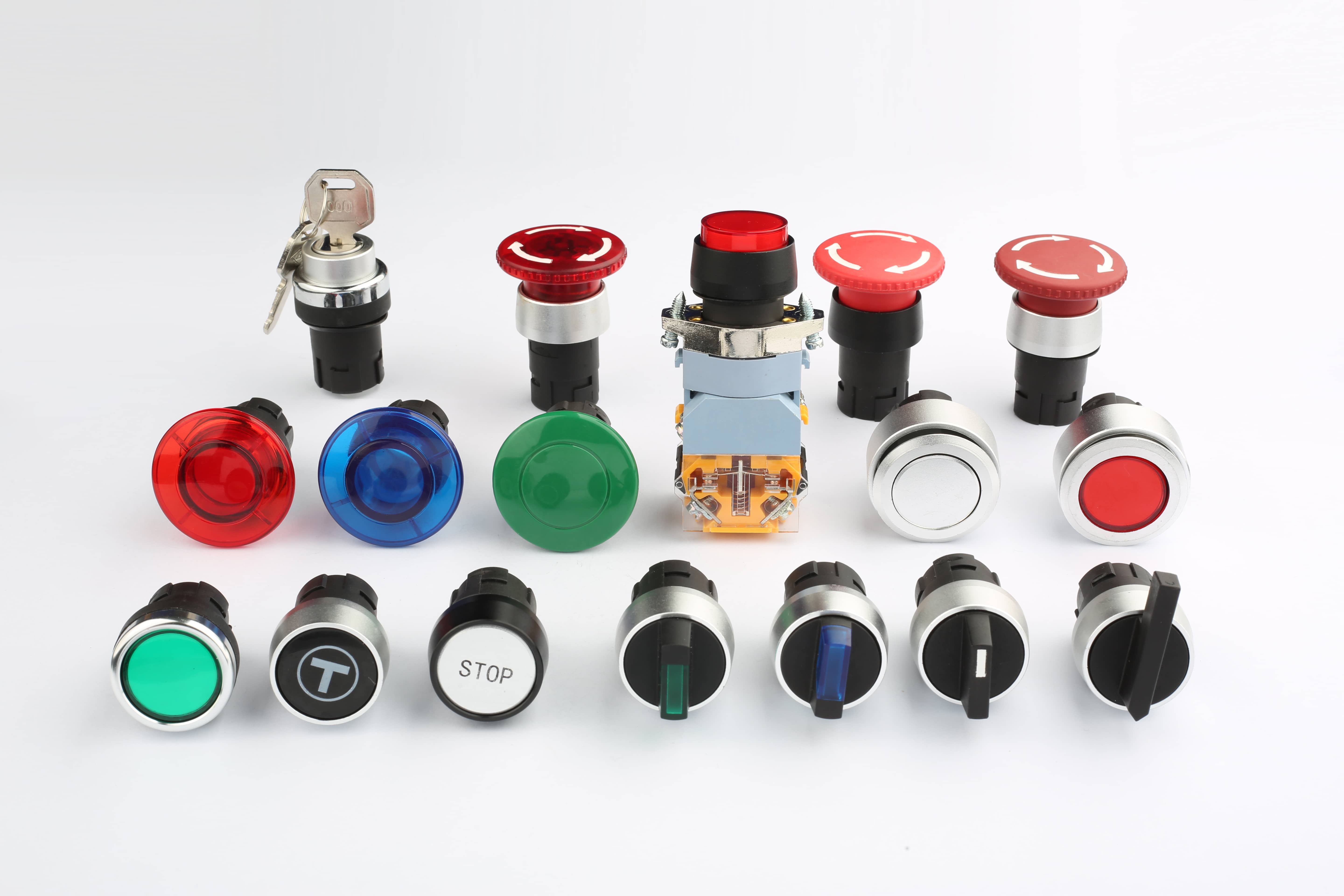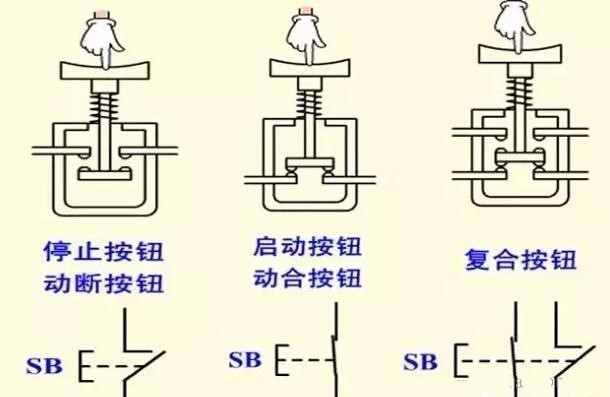Speaking the emergency stop button switch, I believe that many people will not feel strange, almost every day will encounter a variety of button switches, such as some household appliances, medical equipment will have. But if you let its structure and principle say why, it is estimated that many people will be confused. Today, I will tell you about the structure and switching principle of the button.
The emergency stop button switch is usually used to switch on and off the control circuit, which is a low-voltage electrical appliance that issues instructions in electric drive, and is widely used as a master electrical appliance. In the electrical automatic control circuit, it is used to manually send control signals to control contactors, relays, electromagnetic starters, etc. It is characterized by installation in the work in progress of the machine, the instrument, most of the time is in the initial free state of the position, only when required to switch to the second state (position) under the action of external force, when the external force is removed, due to the action of the spring, the switch will return to the initial position.

The emergency stop button switch can complete basic control such as start, stop, reverse and reverse rotation, speed change and interlock. Usually each hard stop button switch has two pairs of contacts. Each pair of contacts consists of a normally open contact and a normally closed contact. When the button is pressed, the two pairs of contacts act at the same time, the normally closed contact is disconnected, and the normally open contact is closed.
In order to indicate the role of each button and avoid misoperation, the button cap is usually made into different colors to show the difference, as shown in the following figure. Its color is red, green, black, yellow, blue, white and so on. For example, red indicates the stop button, green indicates the start button, and so on. The main parameters, type, mounting hole size, number of contacts and current capacity of contacts of the emergency stop button switch are detailed in the product manual.
The button is generally composed of a button cap, a reset spring, a bridge type moving contact, a static contact, a pillar connecting rod and a shell.
The parting and closing state of the contact when the button is not subjected to external force (that is, static) is divided into the start button (that is, the normally open button), the stop button (that is, the normally closed button) and the composite button (that is, the normally open and normally closed contacts are combined into one button). For the start button, the contact is closed when the button cap is pressed, and the contact is automatically disconnected and reset after release; On the contrary, the stop button separates the contact when the button is pressed, and the contact automatically closes and resets after it is released. The composite button is that when the button cap is pressed, the bridge type moving contact moves downward, so that the normally closed contact is first disconnected, and the normally open contact is only closed; When the button cap is released, the normally open contact first breaks and resets, and the normally open contact then closes and resets.
The working principle of the key switch is relatively easy to understand, and the principle is shown in the figure below. Frankly speaking, it is like this: there is an electromagnet adsorption device inside, when you press the button, the electromagnet inside will generate magnetism, and then through the adsorption device to switch on or off the circuit. Thus, the remote control of the line is realized.

The parting and closing state of the contact when the key is not subjected to external force (that is, static) is divided into the start key (that is, the normally open key), the stop key (that is, the normally closed key) and the composite key (that is, the normally open and normally closed contacts are combined into one key). For the start button, the contact is closed when the key cap is pressed, and the contact is automatically disconnected and reset after release. On the contrary, when the button cap is pressed, the contact is separated, and the contact is automatically closed and reset after being released. When pressing the button cap, the bridge type moving contact moves downward, so that the normally closed contact is first disconnected, and the normally open contact is only closed; When the key cap is released, the normally open contact first breaks and resets, and the normally open contact then closes and resets.